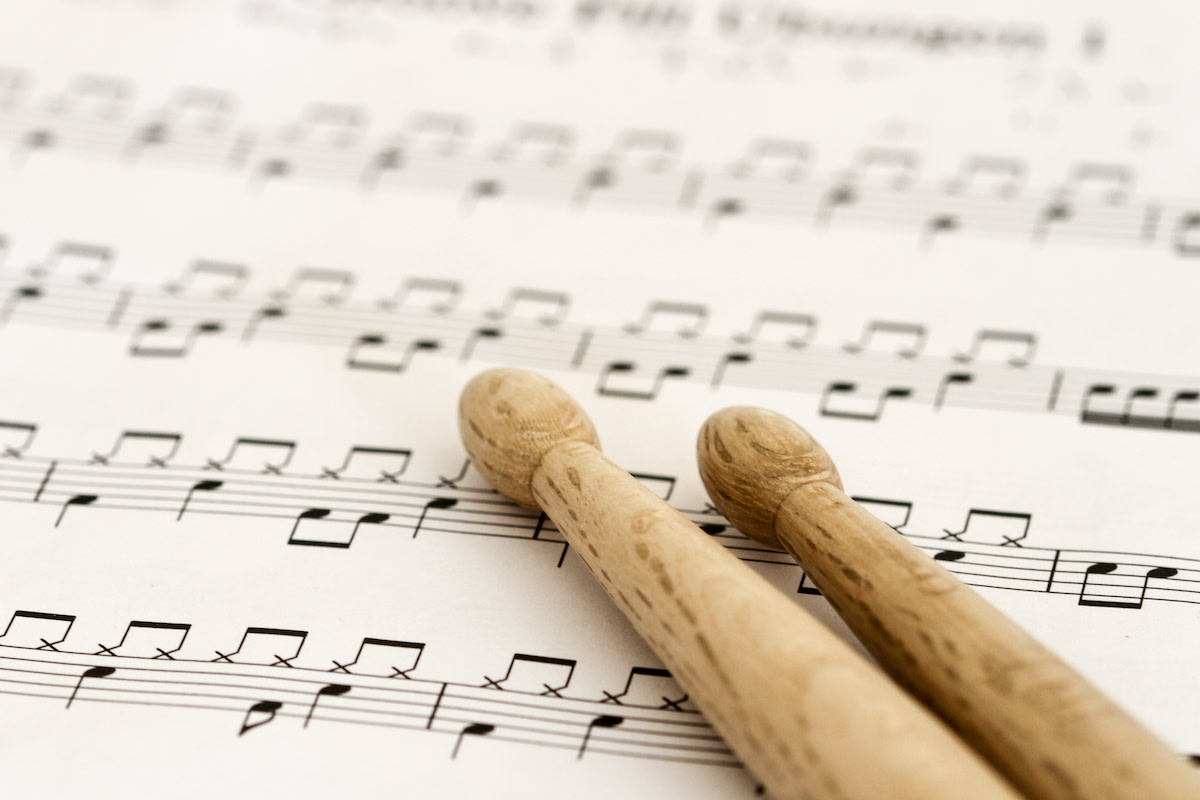How to Read Drum Sheet Music: A Guide to Drum Notation
Written by MasterClass
Last updated: Dec 14, 2021 • 3 min read
If you aim to play drums in touring bands and professional recording sessions, learning to read drum sheet music is essential.
Learn From the Best
How to Read Drum Sheet Music
The drum kit has its own form of music notation, simply called drum notation. Drum transcriptions appear on the same five-line music staff used for melodic instruments, but instead of staff lines and spaces representing different pitches, they represent other drums and cymbals within the drum set. Drum notation typically uses the natural clef, also known as the percussion clef, instead of a treble, bass, tenor, or alto clef.
The bass drum, snare drum, floor tom, and rack toms (hi tom and low tom), each have a space on the staff and are written with an elliptical notehead. Cymbals, including hi-hat, ride cymbals, splash cymbals, and crash cymbals appear with "x"-shaped noteheads. The note stems point downward to indicate when a player sounds a note with their feet, as with a kick drum or a hi-hat. Stems point upward when notes are played using handheld beaters, like drumsticks, rods, mallets, or wire brushes.
A Basic Guide to Drum Notation
Drum transcriptions are written on the same five-line music staff for melodic instruments, but instead of staff lines and spaces representing different pitches, they represent different drums and cymbals within the drum set. Over time, music arrangers have assigned varying note positions to different drums, but in most cases, the basic drum notes appear on the staff as follows:
Rhythmic Durations in Drum Music
The key rhythmic durations in drum music are the whole note, the half note, the quarter note, the eighth note, and the sixteenth note. Each of these notes sounds for one-half the duration of the note before it. For instance, a half note is one-half the duration of a whole note, a quarter note is one-half the duration of a half note, and so forth. They are notated as follows:
3 Common Time Signatures for Drum Music
Note durations lead to musical time signatures, which dictate the duration of each beat in a measure of music and the number of beats per measure. Common time signatures for drum music include:
- 1. 3/4 time signature: This time signature, called 3/4, indicates that there are three beats per measure and each beat has the duration of a quarter-note.
- 2. 6/8 time signature: The 6/8 time signature indicates that there are 6 beats per measure and each beat has the duration of an eighth note.
- 3. 4/4 time signature: The most frequently used time signature in western music is 4/4, which indicates four quarter-notes per measure. Because of this frequent use, 4/4 is often called “common time” and is sometimes indicated with a “c.”
Advanced rhythmic notation goes much further, involving tuplets, grace notes, and durations much shorter than a sixteenth note.
3 Ways to Practice Reading Drum Sheet Music
The key to getting good at reading drum music is to work it into your regular practice routine. Consider the following tips:
- 1. Learn a notable drum solo. In addition to working on drum rudiments like paradiddles and flams, make time to rock out on drum grooves or learn a legendary drum solo, like Led Zeppelin's “Moby Dick” or Cream's “Do What You Like.”
- 2. Practice sight reading music. Include sight reading music in your practice routine. Free drum sheet music is readily available online. If you're enrolled in drum lessons, tell your instructor you want to learn to read drum notation and percussion notation; they should be able to provide some appropriate sheet music to practice.
- 3. Transcribe drum parts. Another way to improve your reading is to transcribe existing drum parts. You can try notating famous drum beats or drum fills, or you can write a new part and transcribe it on the page. You can write out your drum parts by hand, or you can use computer notation software. By practicing your writing and notation, your music sight-reading skills will also improve.
Want to Learn More About Shredding on the Drums?
Snag a MasterClass Annual Membership, pick up your sticks, and find the beat with exclusive instructional videos from GRAMMY-nominated drummer Sheila E. (aka the Queen of Percussion). Once you master the timbales and congas, expand your musical horizons with lessons from other sonic legends like Timbaland, Herbie Hancock, Tom Morello, and others.
